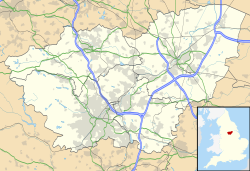Early history
The complex, which covers an area of circa 22 acres (89,000 m2), dates from 1848, replacing an inadequate barracks at Hillfoot. [1]
The barracks is divided into three terraces. The first (top) terrace faces on to what is now Langsett Road. This contained the Mess establishment, quarters for around 40 officers and a similar number of servants, and a chapel. This building has a length of about 354 feet (108 m) and a width and height of about 40 feet (12 m), is three storeys high and has a mixture of gothic and castellated styles. The other buildings of the barracks consisted of a large five-bedroomed house serving as the Garrison Commander’s Quarters outside the walls, a 58-patient two-storey hospital incorporating a barracks for RAMC personnel, a Dental Clinic and a facility for treating women, infantry soldiers' quarters, a clock tower building, with cavalry soldiers' quarters on the first floor and stabling for 260 horses on the ground floor (total accommodation for 918 NCO and other ranks). There was also a Fives Court, a Riding School, a school for 80 children and accommodation for the schoolmistress, married quarters flats for 50 families provided outside the walls, a Gun Shed housing six Field guns, the Barracks Store with living quarters for the Barracks Sergeant, a Guard Room incorporating a Police Room, Detention Cells, and an exercise yard, a Vehicle Shed (built in 1903) which could house 26 motor cars, a Veterinary Infirmary large enough to house 18 horses, a Granary, four cookhouses and various workshops. [1]
On the northern side of the Barracks runs the River Loxley. On the night of Friday 11 March 1864 the ill-fated Dale Dyke Dam further up the Loxley Valley at Bradfield burst causing the Great Sheffield Flood and the resulting flood waters breached a stone wall that was three feet thick. The water rose to the height of twelve feet outside the window of Sergeant Foulds' quarters and drowned two of his children. [2]
On 26 July 1932, an auction was held on the instructions of the War Department by Eadon & Lockwood at Sheffield. However, when bidding reached only £12,000, the auction was terminated and the Barracks withdrawn from sale. In October of that year, the complex was sold to Burdall’s Ltd, a manufacturing chemist noted for its gravy salt, and it became known as Burdall’s Buildings. [3]
This page is based on this
Wikipedia article Text is available under the
CC BY-SA 4.0 license; additional terms may apply.
Images, videos and audio are available under their respective licenses.








